Planning your wedding day involves making countless decisions. When it comes to wedding photography, one of the most significant choices you will make is working out how much time you need for photography on the big day. From the getting-ready preparations and ceremony to the speeches and first dance, each moment holds so much significance, and deciding which moments to capture requires careful consideration of your timeline and what is important to you.
In this guide, I will provide expert advice, insights, and practical tips to help you determine the ideal duration of photography coverage for your special day. I will be covering:
- Your wedding day timeline
- Understanding hourly photography coverage
- Identifying your wedding photography needs: Step-by-step
- How long do you need for pictures on a wedding day? – A practical guide
- Top tips for maximizing your photography time
- Considering additional time – Extra hours on the day
- Frequently asked questions about wedding photography coverage
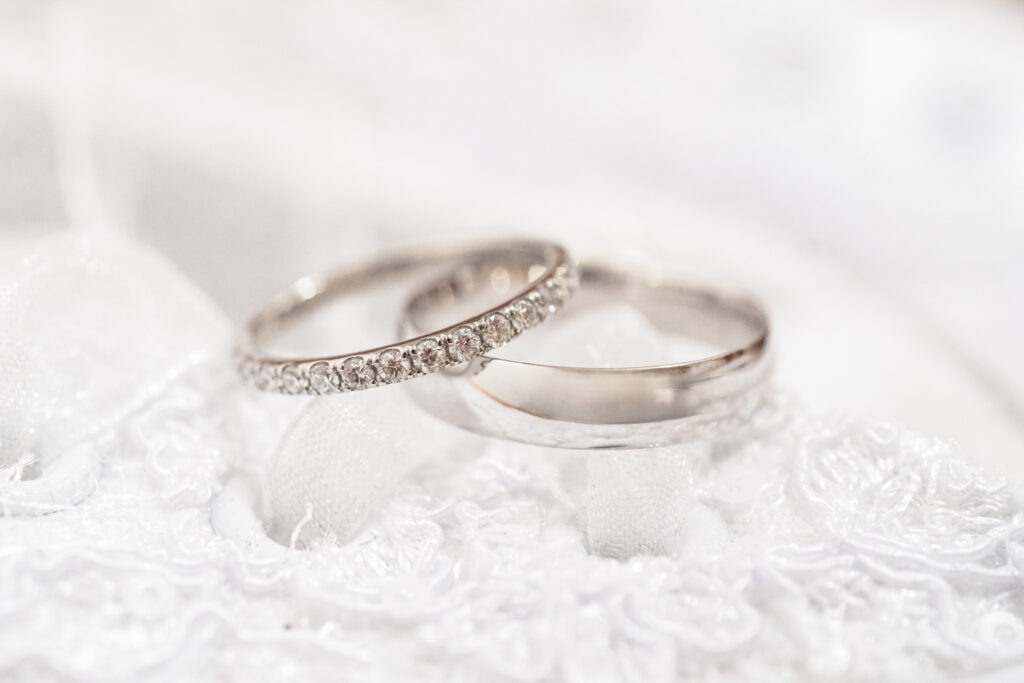
Your wedding day timeline
Your wedding day timeline includes all the different events that make up your big day, from the morning preparations through to the late-night celebrations. During the day, each segment of the timeline intertwines seamlessly to create a memorable wedding experience.
A typical wedding day is divided into components which include (although not necessarily in this order):
- Getting-ready moments
- First look
- Ceremony
- Group or formal portraits
- Drinks reception
- Couples portraits
- Wedding meal (or breakfast) and speeches
- First dance
- Evening reception
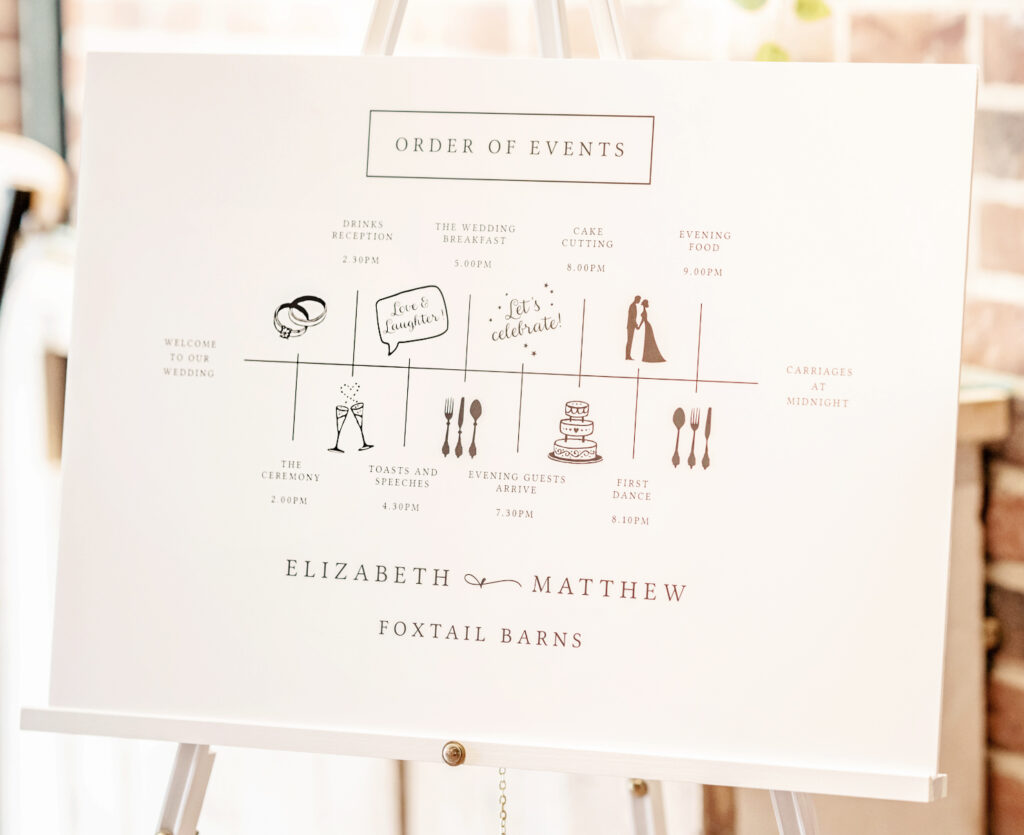
For wedding photography, a full day of coverage involves documenting every part of the day from start to finish, capturing all of these significant moments, and just about everything in between. This comprehensive coverage ensures that your entire wedding story is recorded in detail. On the other hand, part-day coverage focuses on capturing specific segments of the day within a condensed timeframe. This type of coverage often includes pre-selected parts of the day, such as the getting ready photos leading up to the couple’s portraits or from the ceremony through to the speeches. While part-day coverage may not incorporate everything on the day of the wedding, it still captures essential highlights of your celebrations in a meaningful way.
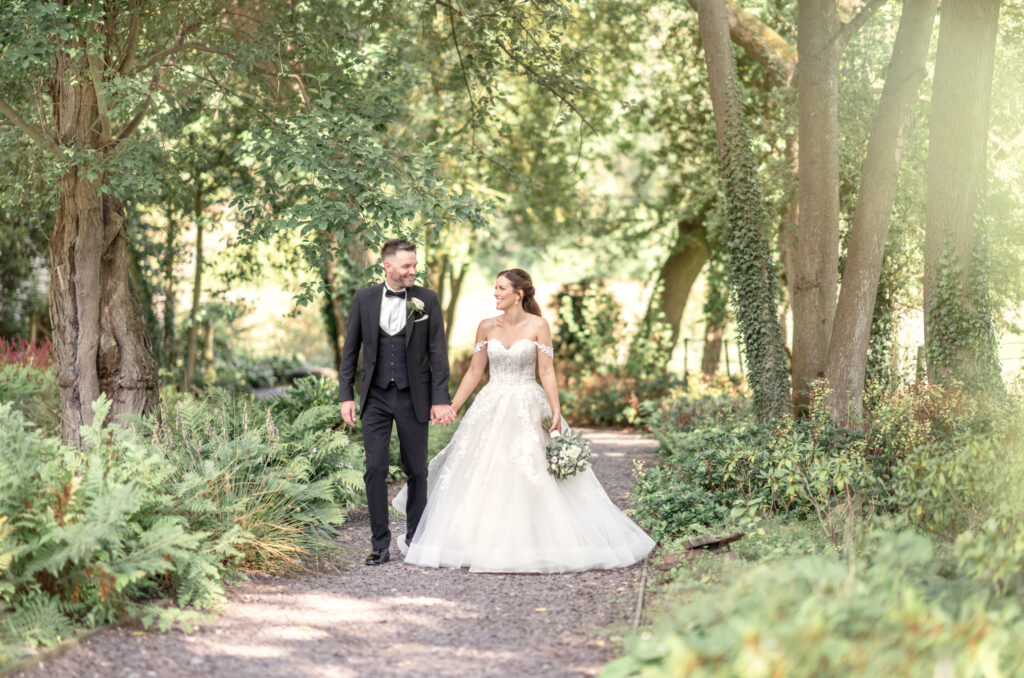
Understanding the hours of wedding photography coverage
When it comes to wedding photography, many photographers price their coverage hourly to accommodate clients’ different needs. Usually, the minimum amount of coverage for a wedding starts at 2 hours and goes all the way to around 12 hours, which is typically considered a (comprehensive) full day of coverage.
Many photographers offer set wedding photography packages, each including different hours of coverage for the day – and these are often bundled with other features such as a wedding album, etc. You can then choose the package that best suits your needs & budget.
Alternatively, you may ask your photographer for a bespoke package that includes the exact number of hours and add-ons (e.g., album, pre-wedding shoot, etc.) that you want – although it’s worth bearing in mind that there is usually a discount built into the set wedding collections offered by your photographer, which may not apply to a bespoke package, so keep this in mind when planning.
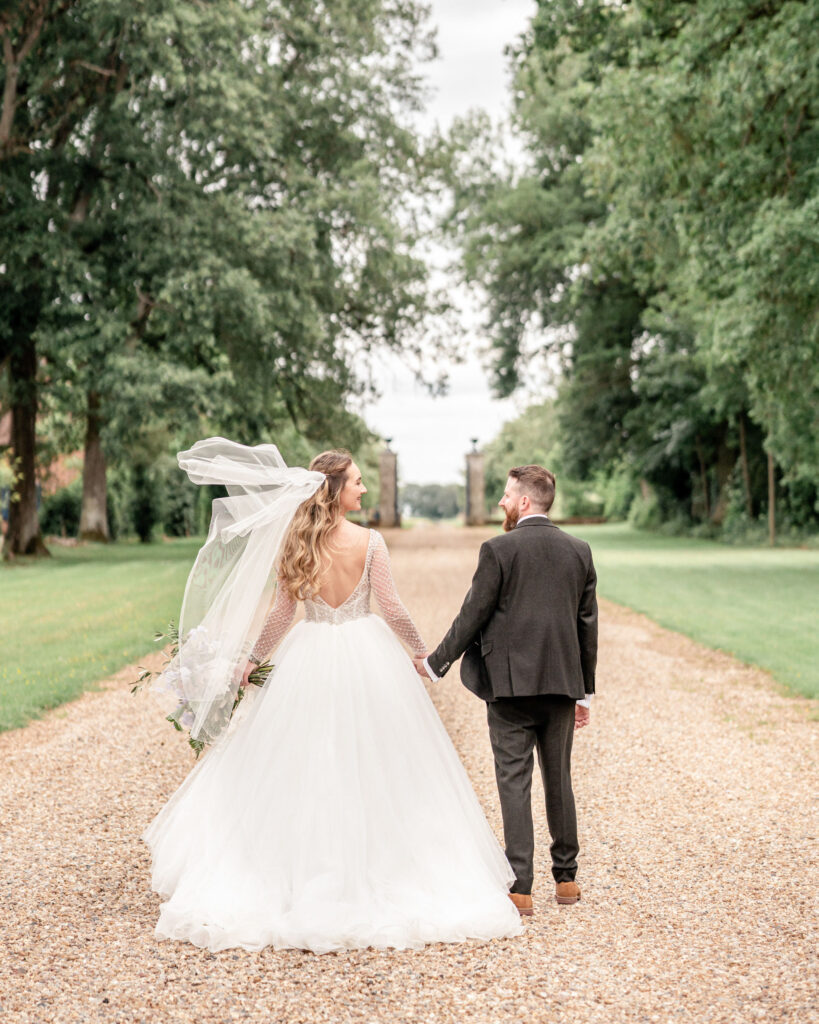
Identifying your wedding photography needs: Step-by-step
There are some key factors to think about when deciding how long you need for photography coverage on your wedding day. Below, I’ve detailed these considerations and provided a step-by-step guide to help make this decision.
Step 1: Your budget for wedding photography
The first thing you need to take into account is your budget for photography. It’s essential to find a balance between capturing all the significant moments and staying within your financial constraints. If you’re working with a limited budget, you might want to consider having shorter coverage. In this case, you could hire a professional wedding photographer for the most important parts of your day, such as the ceremony and portraits. Alternatively, if photography is a top priority and you have flexibility in your budget, investing in extended coverage allows for a more comprehensive documentation of the entire day.
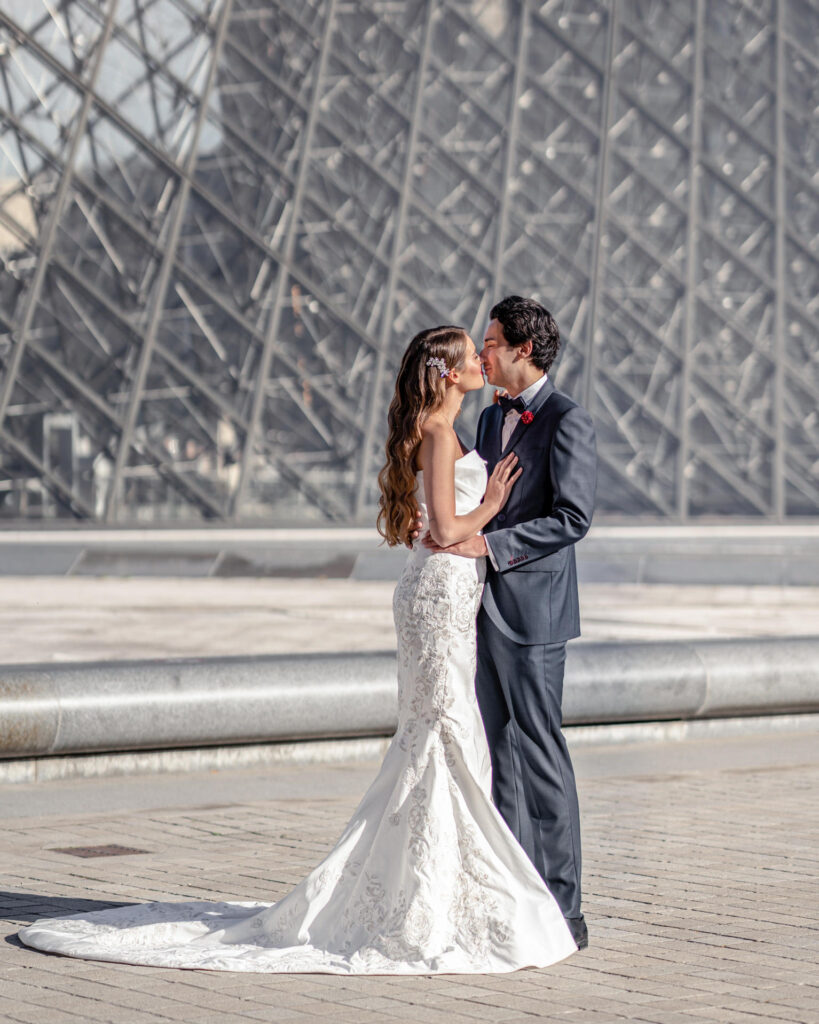
Step 2: The size of your wedding
The number of hours of wedding photography you need will also depend upon your wedding size, as a bigger guest count often means there is much more to document. A large wedding with lots going on will call for a longer duration of photography to ensure comprehensive coverage. Whereas, for a small, intimate wedding with just a few family and friends, you may only need a few hours of photography to document the essential elements of the day.
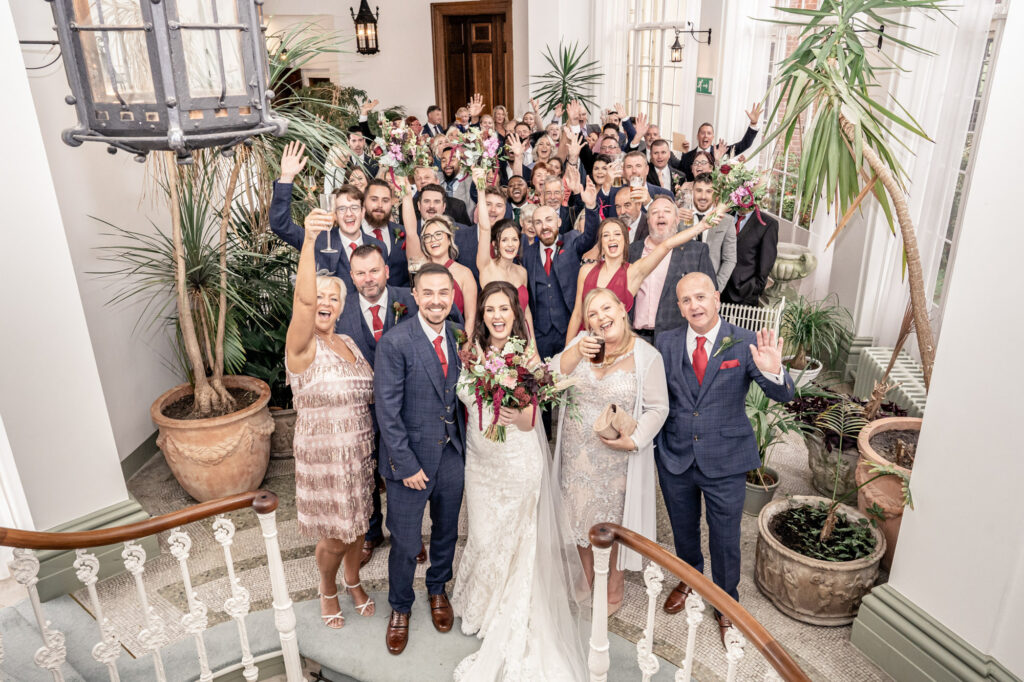
Step 3: The number of wedding locations throughout the day
If your wedding involves multiple locations, such as separate sites for getting ready, the ceremony, and the reception, you’ll need to make sure you allocate enough time for travel and setup at each spot. As such, this will likely require a longer duration of photography coverage. On the other hand, if your celebrations are being held at one central wedding venue with minimal travel involved, you only need coverage for a shorter, particularly if you are focusing on the key events within that single location.
Step 4: Identify which moments mean the most to you
Have a think about which parts of the day hold the most significance for you, whether it’s the exchange of vows during the ceremony, the first look, the heartfelt speeches at the reception, or the candid interactions during cocktail hour. That way, if you are working to a budget, you can choose to allocate your photography hours to cover these special moments. By focusing on the aspects of the day that hold personal significance, you can tailor the number of photography hours to preserve the memories that matter most to you.
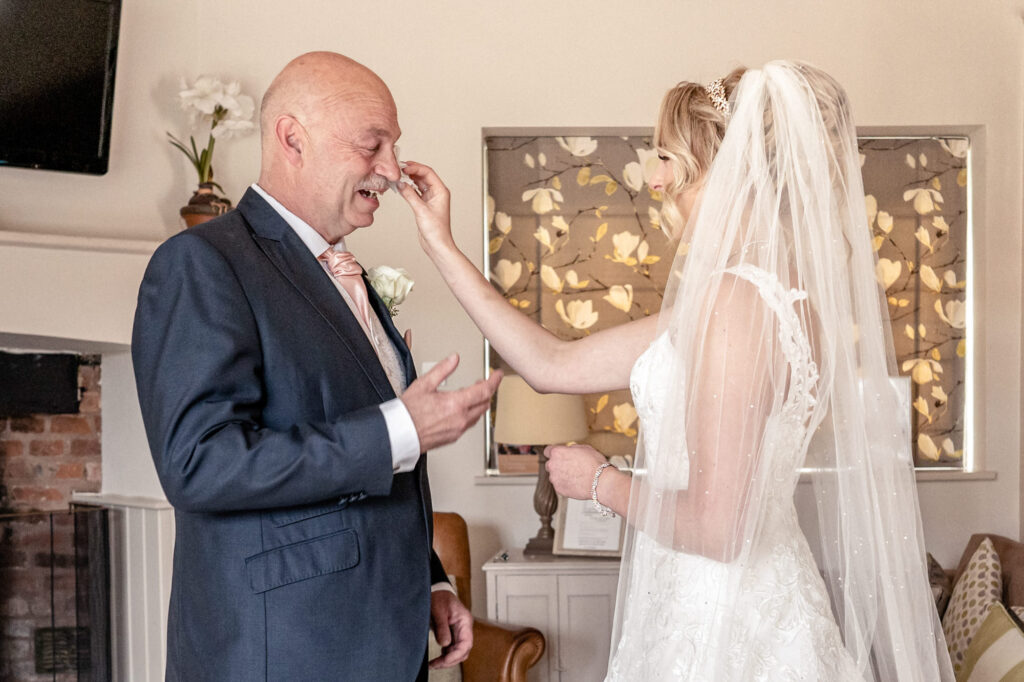
How long do you need for pictures on a wedding day? – A practical guide
If you’re wondering how long you should spend on wedding photos or how long couple portraits take on the big day, here’s a practical guide to help estimate the necessary hours of photography coverage for each part of a standard wedding day. *It’s important to note that this guide is based on general experience and may vary depending on factors like ceremony type and length, guest count, and event style.
- Getting ready portion of the day: Allow 2-3 hours of photography coverage to capture the main essence of your getting ready preparations, including images of your details and bridal party photos. Please note that if you are having your bridal and groom preparations in separate locations and want coverage of both, you will likely need two professional photographers.
- First look: Allow your photographer 10-25 minutes to document the first look moment, including some couple portraits.
- Wedding Ceremony: This can differ greatly depending on the type of ceremony you have. Allow up to 30 minutes for a civil or symbolic ceremony and an hour for religious church ceremonies (although this can be longer for other ceremonies, such as Indian, Greek Orthodox, etc.).
- Group and family portraits: The amount of time you will need to allocate for family photos will depend on the number of different setups you require. I typically allow around 30-45 minutes to capture a whole group photo and some different combinations of the wedding party, e.g., the bride with bridesmaids, the groom with groomsmen, and the couple with their parents, etc. I recommend setting aside anywhere from 3-5 minutes per group photo setup.
- Cocktail reception: Allow 30-60 minutes for well-rounded documentary-style coverage of your guests mingling and enjoying their drinks.
- Couples portraits: For a good range of poses, allow 30 minutes for your bride and groom portraits during the day and 15-20 minutes for golden hour, twilight, and/or sunset portraits. If the different locations are spaced out, ensure you have enough time to get to each backdrop.
- Cake cutting + First dance: Allocate up to 30 minutes to cover cake cutting, your first dance, the father-daughter dance, and the mother-son dance.
- Evening reception: You can choose to have as many of the evening celebrations captured as you would like. It’s a good idea to base the duration of coverage required on your schedule for the evening to incorporate a good range of images, including any fireworks, sparklers, live entertainment you have planned, and, of course, those fun-filled dancing photos.
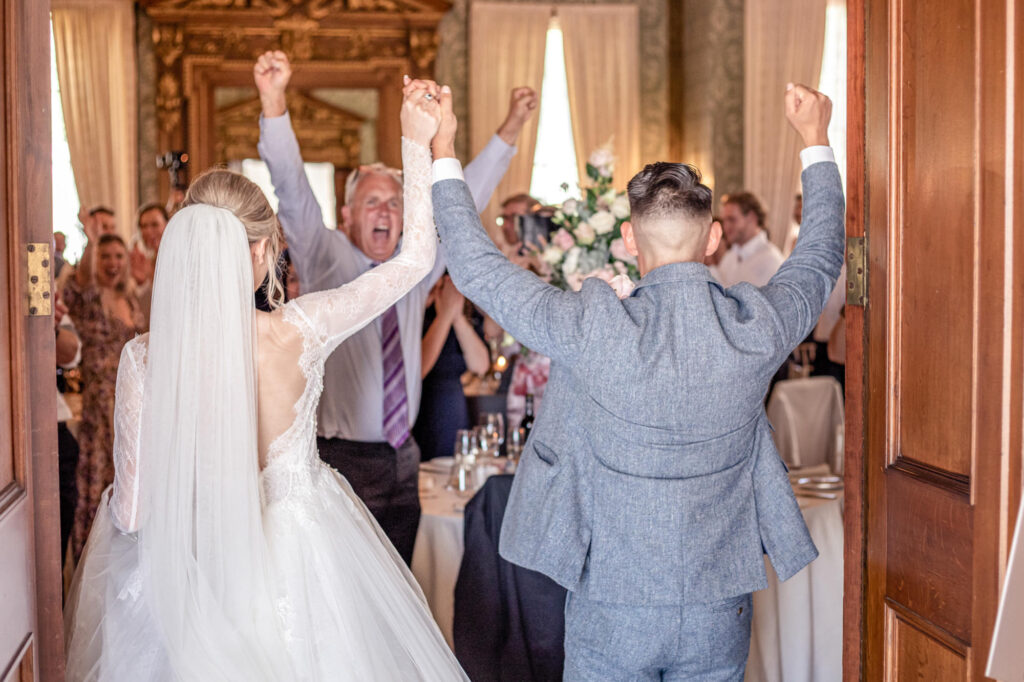
Top tips for maximizing your photography time
Here are my top tips for maximizing the time for photography on your wedding day:
- Strategic planning and effective communication with your photographer are essential.
- Create a schedule that accounts for all of the key moments you want to capture, allowing for smooth transitions between events. Prioritise your must-have shots and communicate them clearly to your photographer in advance to ensure they are not missed.
- Plan the locations for your couple’s portraits and allow plenty of time to get to each spot.
- Streamline your group photos by providing a list of must-have combinations. Appoint 2-3 friends or family members (from your bridal party) to organise your guests and ensure they are in the right place at the right time.
- Keep to your original timeline as much as possible throughout the day.
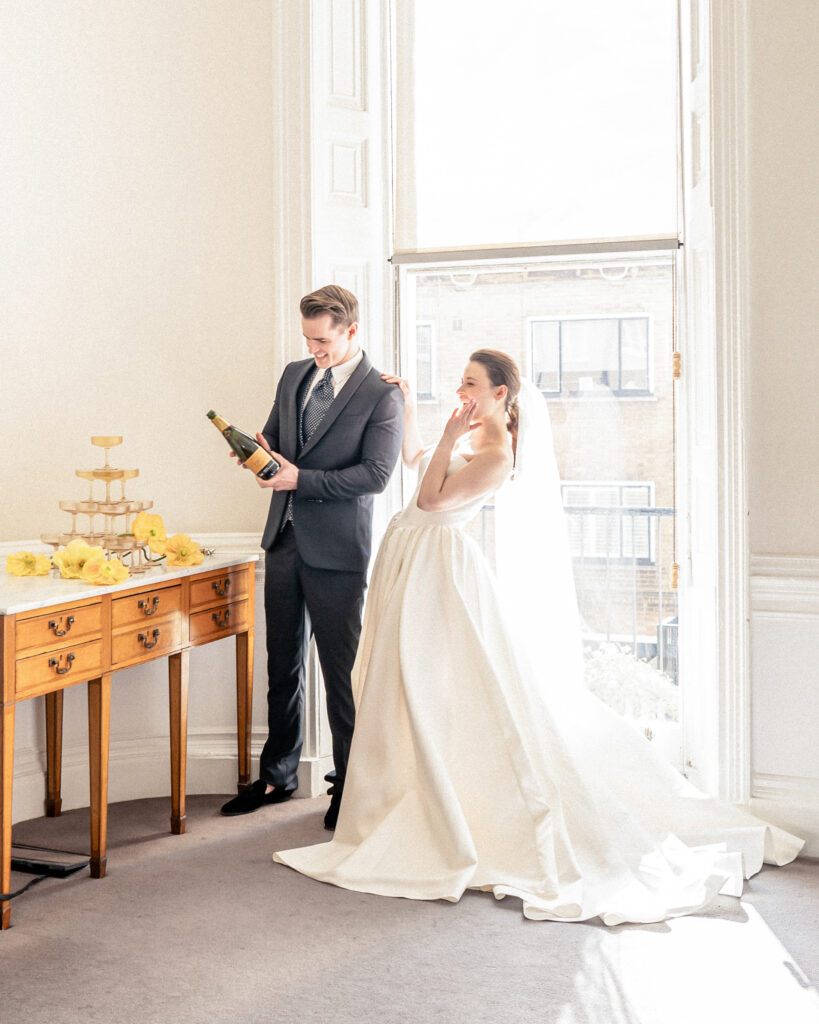
Considering additional time – Extra hours on the day
Have a contingency plan to account for unforeseen circumstances or extra photo opportunities on the wedding day. Add a little extra time between events to build flexibility into your timeline to accommodate unexpected delays, such as traffic or schedule changes. Be open to seizing spontaneous moments for photos that arise throughout the day. Communicate openly with your photographer about any last-minute photo requests or adjustments to ensure every desired moment is captured. Finally, discuss the possibility of extending your coverage by adding any extra hours, if necessary.
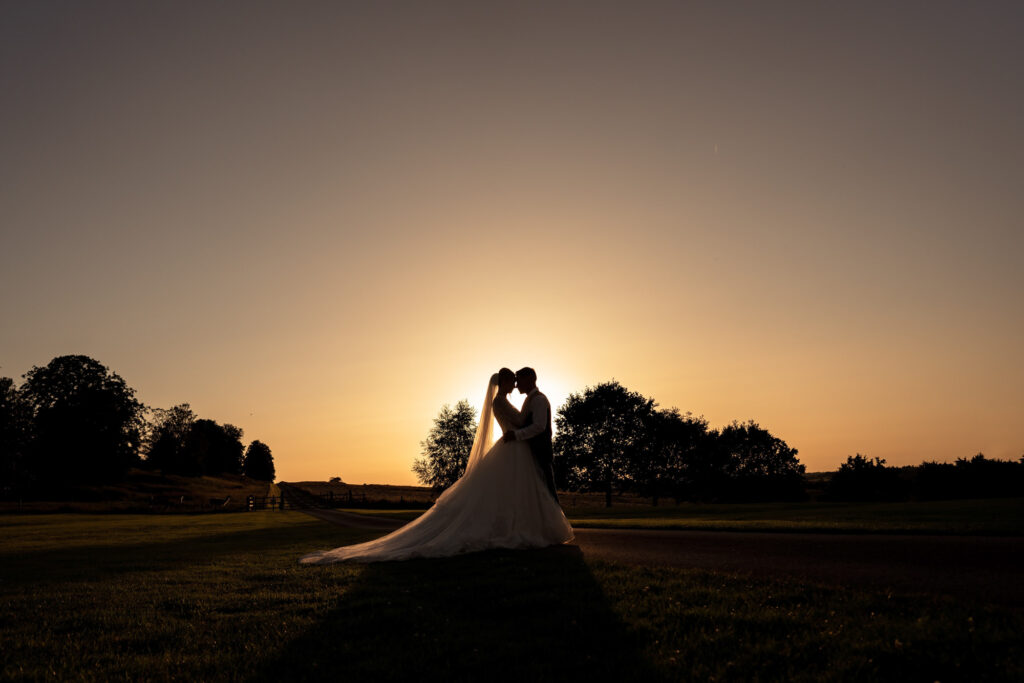
Frequently asked questions about wedding photography coverage
How long is a full day for a wedding photographer?
A full day of coverage for a wedding photographer typically ranges from 8 to 12 hours, the longer side covering the preparations all the way through to the grand exit. The exact duration can vary depending on the offer included in the photography package, the timeline for the day, and any additional services included in the package.
What time should a wedding photographer start?
A wedding photographer often starts capturing moments about 2-3 hours before the ceremony begins. This timing allows the photographer to document the getting ready process, which includes candid moments with the bride and her bridesmaids and the groom with his groomsmen, along with wedding details such as the dress, suit, and accessories. Starting early also provides ample time for pre-ceremony portraits.
What time do wedding photographers leave?
For a full day of wedding photography, wedding photographers usually stay until all of the key events are covered, typically around the end of the evening reception. This ensures they capture important moments that occur towards the end of the day, like the first dance, cake cutting, and other significant celebrations. The exact departure time can vary based on the couple’s preferences and package agreements with the photographer.
How many photos does a photographer take in an hour?
This very much depends on the complexity of the shots, the event dynamics, and the photographer’s style. As well as the format your photographer uses to shoot with, be it either fully digital, film, or a hybrid of both. For digital photography, your photographer is likely to capture well in excess of a hundred photos per hour. This range allows for capturing a variety of moments and ensuring a good selection of high-quality images to choose from during post-production.
How many photos do you normally get from a wedding photographer?
This can vary greatly from photographer to photographer, and is dependent upon whether your photographer uses film or digital, and is subject to factors like the duration of the event, the activities throughout the day, and the photographer’s style and approach to editing. Typically, you can expect to receive anywhere around 500 to 1500 edited (digital) photos for full-day coverage of around 10 hours. For me personally, I deliver, on average, around 100 edited images for every hour captured.
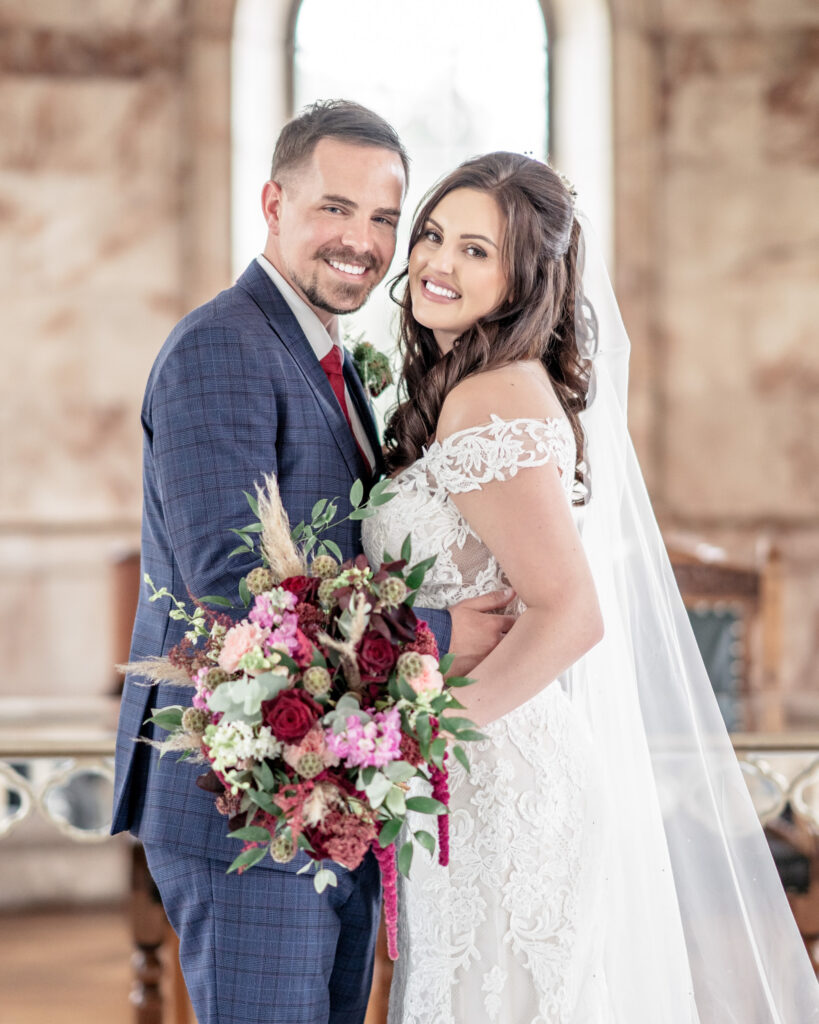
In conclusion
As discussed in this blog, you will want to consider various factors when determining how much wedding photography coverage to book. Understanding your wedding day timeline, the hourly coverage options available, and your specific photography needs is essential for optimal planning.
The ideal scenario is to have a full day of photography coverage, so that all of the key moments are captured, however if this isn’t possible, then start with looking at wedding photography budget, identifying your ideal investment for photography. After which consider the size of your guest list, your wedding day timeline, the number of locations you will be using throughout the day, and the travel time getting to these venues –as these logistics will likely determine the number of hours you will need for photography. The most important thing is to consider the parts of the day that mean the most to you, as these are the moments you will definitely want to have documented. Remember, if you are in doubt, speak to your photographer or wedding planner as they will be able to guide you ensuring you come away with the perfect duration of coverage for you.
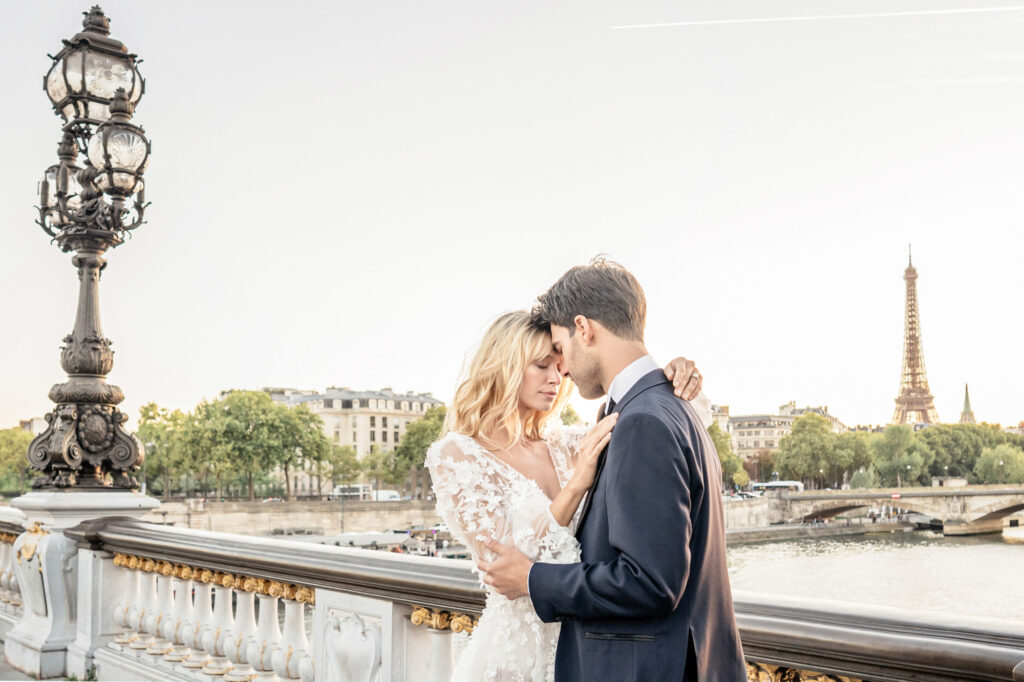
Do you need a photographer for your big day?
You will find lots of useful information about finding the perfect wedding photographer on my blog:
‘What to consider when choosing a wedding photographer.‘
If you’re looking for a skilled and dependable photographer for your special day, I’m here to help! I’m Victoria Amrose, and I have been capturing beautiful weddings in Europe for over eleven years. I will customize my approach to suit your needs and preferences by understanding your priorities as a couple. You don’t need to worry about posing, as I’ll provide as much or as little guidance as you like while discreetly documenting the rest of your day and details unobtrusively throughout.
Want to know more? Do not hesitate to contact me for more information!
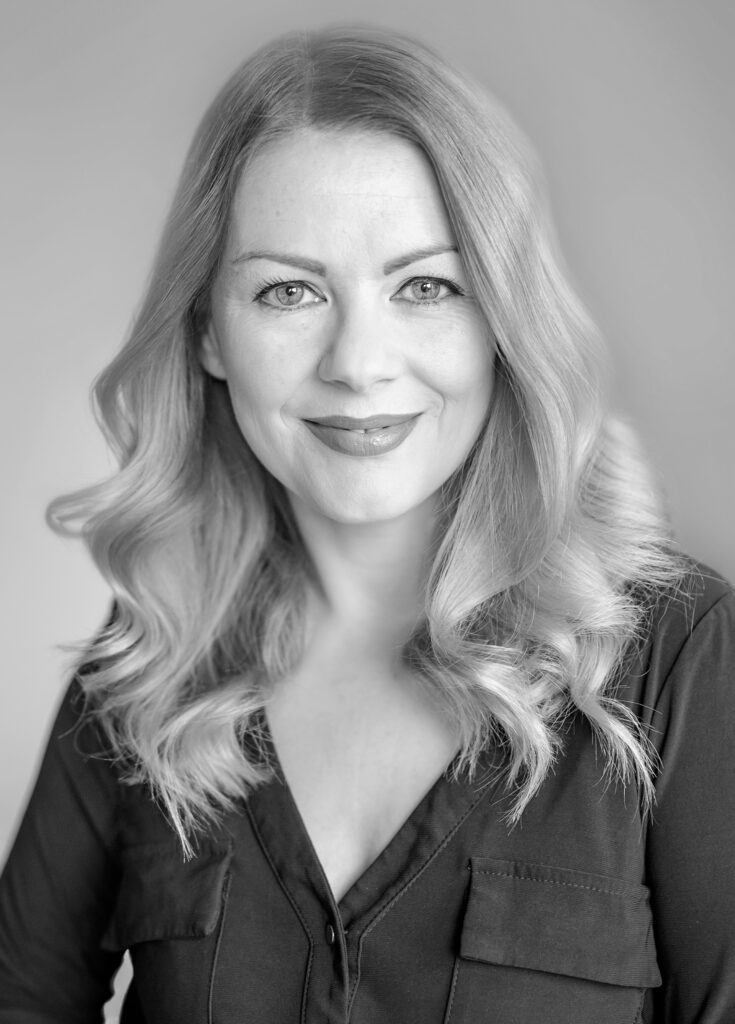
If you found this article useful you may also like:
The Best Resources for Wedding Planning
Key Wedding Photography Styles you need to know
Getting married? A guide to getting wedding photos you will love!
+ show Comments
- Hide Comments
add a comment